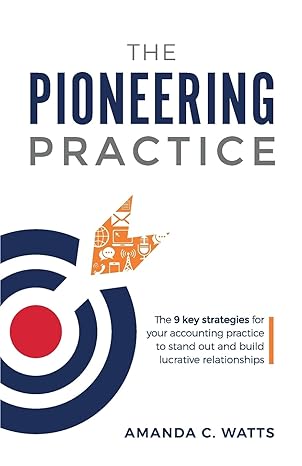Answered step by step
Verified Expert Solution
Question
1 Approved Answer
Marla recently inherited $50,000 and is considering two alternatives for investing these funds. Investment A is stock of a C corporation, expected to pay annual
Marla recently inherited $50,000 and is considering two alternatives for investing these funds. Investment A is stock of a C corporation, expected to pay annual dividends of 8 percent. Investment B is stock of an S corporation. Based on income projections, Marla's share of the S corporation's ordinary income would be approximately $10,000 per year. However, the S corporation does not expect to make cash distributions for the foreseeable future. Marla would hold either investment for three years, at which time she believes the C corporation stock could be sold for $60,000 and the S corporation stock could be sold for $90,000. Assume that the initial investment would be made in year 0, dividends on the C corporation stock would be received in years 1, 2, and 3; S corporation earnings would be allocated in years 1, 2, and 3; and either investment would be sold in year 3. Assume that Marla's S corporation income would not qualify for the QBI deduction. Also assume that Marla's marginal tax rate on ordinary income is 35 percent. Use Appendix A. Required: a. Using a 4 percent discount rate, calculate the net present value of after-tax cash flows attributable to either investment. Assume a 15% rate on capital gains and dividends. b. Which investment she should choose? Complete this question by entering your answers in the tabs below. Required A Required B Using a 4 percent discount rate, calculate the net present value of after-tax cash flows attributable to either investment. Assume a 15% rate on capital gains and dividends. Use appropriate factors from the Appendix A. Note: Negative amounts should be indicated by a minus sign. Round intermediate calculations to the nearest whole dollar amount. Investment A Year 0 Year 1 Year 2 Year 3 Before-tax cash flows Tax (cost) or savings After-tax cash flows NPV Investment B Year 0 Year 1 Year 2 Year 3 Before-tax cash flows Tax (cost) or savings After-tax cash flows NPV < Required A Required B > APPENDIX A Present Value of $1 Periods 3% 4% 5% 6% 7% 8% 9% 1 0.971 0.962 0.952 0.943 0.935 0.926 0.917 2 0.943 0.925 0.907 0.890 0.873 0.857 0.842 3 0.915 0.889 0.864 0.840 0.816 0.794 0.772 4 0.888 0.855 0.823 0.792 0.763 0.735 0.708 5 0.863 0.822 0.784 0.747 0.713 0.681 0.650 6 0.837 0.790 0.746 0.705 0.666 0.630 0.596 7 0.813 0.760 0.711 0.665 0.623 0.583 0.547 8 0.789 0.731 0.677 0.627 0.582 0.540 0.502 9 0.766 0.703 0.645 0.592 0.544 0.500 0.460 10 0.744 0.676 0.614 0.558 0.508 0.463 0.422 11 0.722 0.650 0.585 0.527 0.475 0.429 0.388 12 0.701 0.625 0.557 0.497 0.444 0.397 0.356 13 0.681 0.601 0.530 0.469 0.415 0.368 0.326 14 0.661 0.577 0.505 0.442 0.388 0.340 0.299 15 0.642 0.555 0.481 0.417 0.362 0.315 0.275 16 0.623 0.534 0.458 0.394 0.339 0.292 0.252 17 0.605 0.513 0.436 0.371 0.317 0.270 0.231 18 0.587 0.494 0.416 0.350 0.296 0.250 0.212 19 0.570 0.475 0.396 0.331 0.277 0.232 0.194 20 0.554 0.456 0.377 0.312 0.258 0.215 0.178 Periods 10% 11% 12% 13% 14% 15% 20% 1 0.909 0.901 0.893 0.885 0.877 0.870 0.833 2 0.826 0.812 0.797 0.783 0.769 0.756 0.694 3 0.751 0.731 0.712 0.693 0.675 0.658 0.579 4 0.683 0.659 0.636 0.613 0.592 0.572 0.482 5 0.621 0.593 0.567 0.543 0.519 0.497 0.402 6 0.564 0.535 0.507 0.480 0.456 0.432 0.335 7 0.513 0.482 0.452 0.425 0.400 0.376 0.279 8 0.467 0.434 0.404 0.376 0.351 0.327 0.233 9 0.424 0.391 0.361 0.333 0.308 0.284 0.194 10 0.386 0.352 0.322 0.295 0.270 0.247 0.162 11 0.350 0.317 0.287 0.261 0.237 0.215 0.135 12 0.319 0.286 0.257 0.231 0.208 0.187 0.112 13 0.290 0.258 0.229 0.204 0.182 0.163 0.093 14 0.263 0.232 0.205 0.181 0.160 0.141 0.078 15 0.239 0.209 0.183 0.160 0.140 0.123 0.065 16 0.218 0.188 0.163 0.141 0.123 0.107 0.054 17 0.198 0.170 0.146 0.125 0.108 0.093 0.045 18 0.180 0.153 0.130 0.111 0.095 0.081 0.038 19 0.164 0.138 0.116 0.098 0.083 0.070 0.031 20 0.149 0.124 0.104 0.087 0.073 0.061 0.026
Step by Step Solution
There are 3 Steps involved in it
Step: 1
To determine the net present value NPV of the aftertax cash flows for both Investment A C corporatio...
Get Instant Access to Expert-Tailored Solutions
See step-by-step solutions with expert insights and AI powered tools for academic success
Step: 2

Step: 3

Ace Your Homework with AI
Get the answers you need in no time with our AI-driven, step-by-step assistance
Get Started


